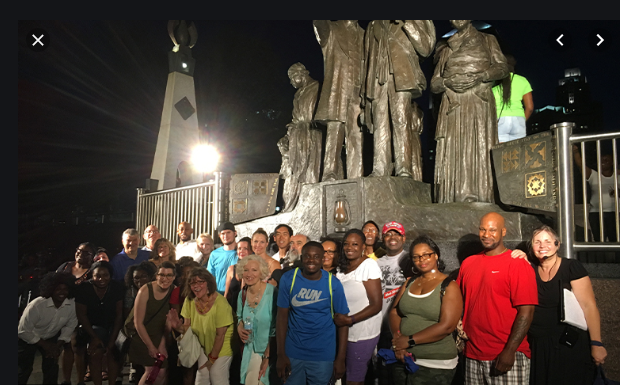On the Flight to Freedom tour at the First Congregational Church of Detroit, Reginald Wheeler plays the role of “Conductor Beau,” guiding visitors through a compelling reenactment of the Underground Railroad, telling stories and showing visitors the secret signs that were used to let freedom seekers know whether it was safe to proceed on the route.
The Underground Railroad was a secret network that included free blacks, former slaves and white abolitionists who provided secret routes and safe locations to blacks escaping slavery. Many of those who helped the freedom seekers became known as conductors.
And it’s believed the Underground Railroad got its name from a bounty hunter who said it was as if a runaway slave he lost sight of had gone into an underground railroad.
“They got an opportunity to rest, to get clean clothes, to be fed and to be prayed over,” said Rev. Lottie Jones Hood about the Underground Railroad.
Known as “Rev. Lottie,” she is the first African American and woman to lead the First Congregational Church of Detroit. “It really is not black history. It’s American history.”
The church was first located near the Detroit River on Jefferson near Beaubien, and in the basement is where they would help hide freedom seekers who often waited for the signal that it was safe to make their way to the river at night where they would be taken by boat or raft to Canada.
The code name for Second Baptist Church of Detroit was the “Croghan Street Station.” It wasn’t an actual train station but railroad terminology was commonly used to maintain the secrecy of the people and places that were part of the Underground Railroad
Second Baptist Church of Detroit, located in what’s now known as Greektown, is reportedly the oldest black church in the midwest, and it’s where freedom seekers would hide in the basement until it was safe to make their way to the river. During emergencies, there was a tunnel that led to a wooded area near the river.
Notable abolitionist George DeBaptiste was born a free man in Virginia and later relocated to Detroit where he was a conductor to those seeking freedom in the Underground Railroad.
For article, click below:
Source: Tours, reenactments highlight roles Detroit churches played in the Underground Railroad


